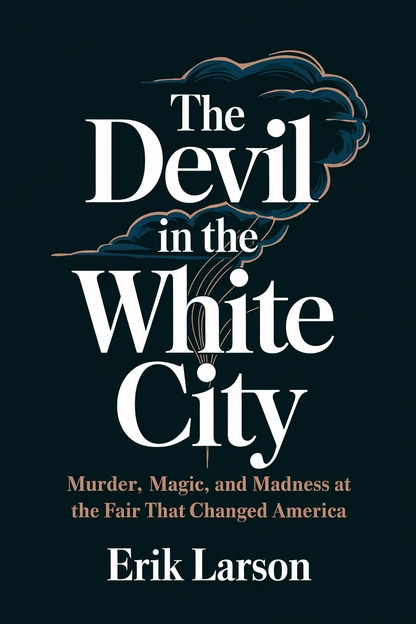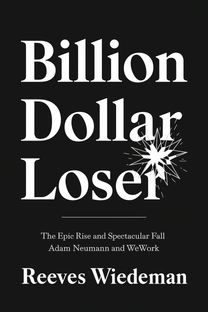
The Devil in the White City
Murder, Magic, and Madness at the Fair That Changed America
by Erik Larson
Brief overview
This book centers on the monumental 1893 World’s Columbian Exposition in Chicago, unveiling the fair’s architectural wonders and the chilling events involving a cunning murderer. You’ll follow the grand vision of city leaders who aimed to impress the world, while a dark undercurrent of crime stayed hidden in the shadows. By finishing this summary, you’ll see how brilliance and evil could coexist in one extraordinary moment in history.
Introduction
Welcome to a story set in Chicago at the close of the 19th century, where opportunity, innovation, and treachery met in spectacular fashion. It was a city swelling with new skyscrapers and a brash sense of possibility. With the 1893 World’s Columbian Exposition, or “White City,” Chicago aimed to dazzle the world.
In the midst of this celebration stood Daniel Burnham—an architect who championed the fair’s design and execution. His relentless drive and perfectionism spurred thousands of workers to build a marvel of white buildings and classical facades. Yet beneath the radiance, Chicago harbored grim alleys, where dreams and illusions collided.
While Burnham and his team confronted issues of budget, weather, and engineering design, an unsettling figure named H. H. Holmes quietly devised his own sinister project. Holmes’s labyrinthine property, eventually nicknamed the 'Murder Castle,' became notorious for luring unsuspecting victims who never reemerged.
This introduction sets the stage for an epic tale of double ambition: one side dedicated to civic pride and architectural brilliance, the other fueled by manipulative crimes. Together, they illustrate how even the grandest achievements can camouflage unspeakable wrongdoing.
A City on the Rise
In the decades leading to 1893, Chicago experienced unprecedented growth. The Great Fire of 1871 destroyed vast swaths of the city, yet it sparked a reconstruction fervor. Skyscrapers soared, population boomed, and powerful industrialists felt certain that Chicago could outshine New York or Paris.
Burnham, armed with restless ambition, saw the upcoming fair as a chance to transform Chicago’s muddy chaos into an architectural masterpiece rivaling the beauty of Europe’s grand capitals. He believed in surrounding himself with the country’s best architects, hoping their combined talents could produce a spectacle unlike anything ever built.
Politically, the city was shaped by tough bosses, hasty deals, and class tensions. Workers struggled under industrial demands while the upper classes reveled in new fortunes. With so many social layers, the fair’s potential for either grand success or epic failure hung in the balance.
Amid these challenges, Burnham pressed on. He stood tall, an imposing figure who convinced financiers, civic leaders, and skeptics that the fair would uplift Chicago. Enduring personal setbacks and local rivalries, he continued to dream of colossal halls, shimmering lagoons, and a cityscape that could momentarily banish the nearby stockyards’ unsavory stench.
What is The Devil in the White City about?
The Devil in the White City delves into the 1893 World’s Columbian Exposition in Chicago, showcasing the breathtaking architectural achievements that dazzled a rapidly modernizing nation. At the same time, the book reveals a chilling undercurrent: a cunning murderer who used the fair’s bustle to cloak unsettling crimes. This striking contrast highlights how social progress can mask darker motives.
Erik Larson weaves two parallel narratives—one celebrating visionary city planning and one detailing methodical wrongdoing—into a cohesive study of both human ambition and moral frailty. The book underscores the transformative power of grand ideas while reminding us that every era has its shadowy forces. Readers come away with a deeper sense of how brilliance and cruelty can converge in a single moment in history.
Review of The Devil in the White City
The Devil in the White City excels at immersing readers in Chicago’s Gilded Age, blending meticulous historical research with a pace that feels like a true-crime thriller. Its strongest attribute is the dual portrait of Daniel Burnham’s architectural triumph and H. H. Holmes’s depravity, shining a spotlight on the very different ways people can seize opportunity. Larson’s attention to detail offers practical takeaways about leadership, persistence, and the perils of unchecked ambition.
Written in a smooth, accessible style, the book never bogs down despite its wealth of information. It’s ideal for readers who enjoy a narrative that goes beyond a single genre, providing both a look into America’s developing urban landscapes and a cautionary tale about hidden threats. With this well-crafted account, the book emerges as a compelling study of history’s bright hopes muddied by harsh realities, making it an essential addition to any reading list.
Who should read The Devil in the White City?
- History buffs interested in late 19th-century American society and the growth of modern cities
- True-crime enthusiasts who appreciate stories with a solid historical context
- Architecture or urban planning fans who want to learn about the significance of the 1893 World’s Columbian Exposition
- Readers intrigued by the psychological profile of infamous criminals within a broader cultural backdrop
About the author
Book summaries like The Devil in the White City
Why readers love Mindleap
10-Minute Book Insights
Get the core ideas from the world's best books in just 10 minutes of reading or listening.
Curated For You
Discover your next favorite book with personalized recommendations based on your interests.
AI Book ExpertNew
Chat with our AI to help find the best book for you and your goals.
Reviews of MindLeap
Love how I can get the key ideas from books in just 15 minutes! Perfect for my busy schedule and helps me decide which books to read in full.
Alex R.
The summaries are incredibly well-written and the audio feature is perfect for my commute. Such a time-saver!
Jessica M.
Great app for personal growth. The insights are clear and actionable, and I love how they capture the essence of each book.
Chris P.
The app is beautifully designed and the summaries are top-notch. Definitely worth every penny!
Sarah K.



